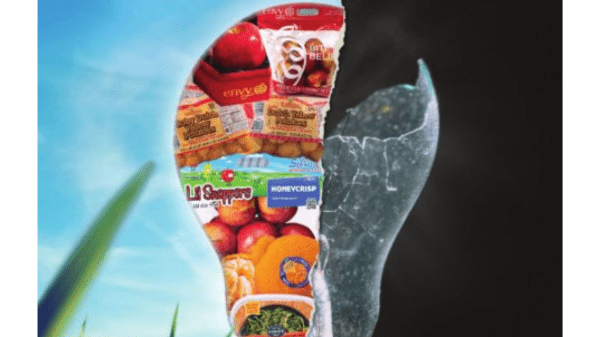Sometimes a new product innovation can be too far out of a company’s wheelhouse.
Brianna Shales, director of marketing for Stemilt Gowers, LLC BB #:113654 in Wenatchee, WA, remembers the company’s foray into premium juice, called “It’s Red Apple Juice,” made from red flesh apples.
“This was a brand new area of the supermarket for us,” Shales says, “so it required a lot of studying displays and how it would appear on the shelf to design a brand that would stand out in a crowd.”
The company also spent a great deal of work getting the bottling right, the flavor right, and understanding the different requirements for nutritional information.
After a great launch and working hard to earn much sought-after shelf space in premium juice, Stemilt pulled the product. It was just too far out of the company’s core business.
“We entered an area of the department that was new to us and learned a lot about the process it takes to get a product on the shelf consistently throughout the year,” Shales explains.
“It’s not easy! Because this was not our primary business of fresh fruit,” she adds, “the different cost structure made logistics challenging.”
There were many different players in the space as well. Shales was encouraged, though, because Stemilt continues to get inquiries about the product even though it is no longer on the market.

It’s Red Apple Juice’s flop contrasts dramatically with what has been a huge winner for Stemilt, the Lil Snappers pouch bag program.
Lil Snappers branding and execution actually came together quite quickly for the company under previous marketing director Roger Pepperl, Shales says.
“Roger noticed the success of Cuties in the marketplace, and when we had increased supplies of smaller fruit, he bet we could apply intent marketing to the apple category,” Shales says.
“This was also the time when pouch bags were just starting to come out, and so he led Stemilt to jump on something very new that shook up our ways of packing.”
While Lil Snappers weren’t an overnight win, they’ve had lasting success for the company.
“It took time to build momentum at retail,” notes Shales, “but after a few trials, we could prove they were building incremental sales of apples by capturing a segment of consumers looking for convenience and quality for their kids’ snacks and lunches.”
This is an excerpt from the cover story of the September/October 2021 issue of Produce Blueprints Magazine. Click here to read the whole issue.



